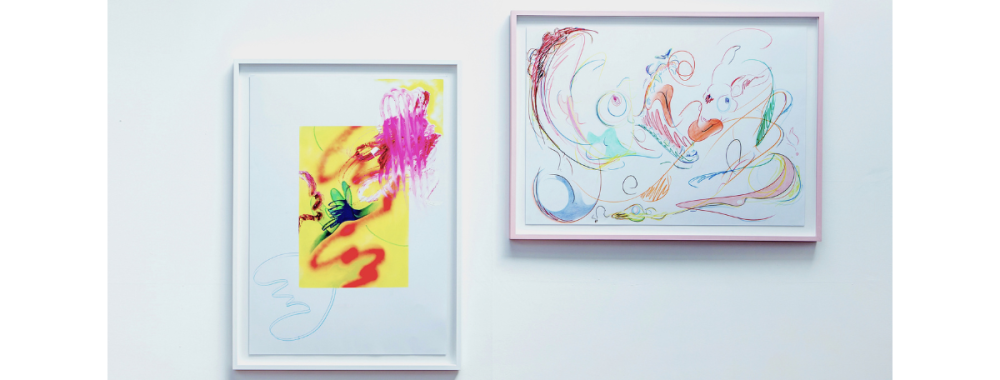
Level: Beginners
Tutor: Kate Dunn
Dates: 7-11 July 2025
Time: 10:00 – 17:00
Cost: £585
SHORT COURSE OVERVIEW
A five-day immersive course looking at the relationship between two-dimensional abstract art and our bodies. Considering the way materials, actions and tools impact the body, effecting the gestures and energetic qualities imbued in an artwork.
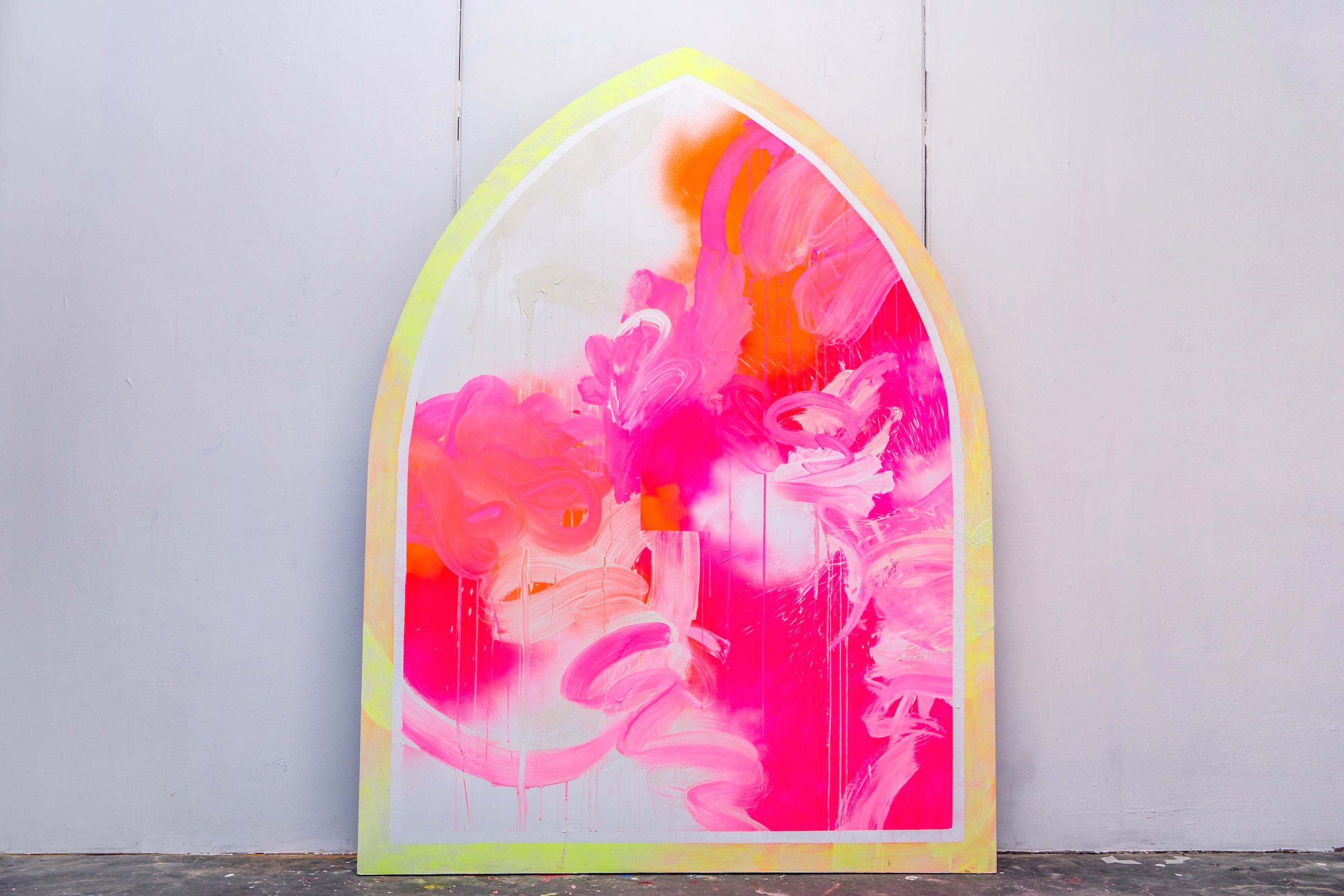 ‘Meet me at the Love Parade’, Kate Dunn
‘Meet me at the Love Parade’, Kate Dunn
Day One: Body Parts
Working with black and white materials on paper, we will focus on the areas of our bodies we use to create an abstract artwork. In coming to abstraction, we will embrace the approach of working outside of traditional tools, instead we will lean into the various types of gestures available to us through our body parts.
When using our hands, we will consider where our movement begins, in the knuckle, wrist, elbow, shoulder, waist or from the feet up. Examples of the body parts that we will use are hands, elbows, legs, mouths and feet.
Using graphite, charcoal, chalk and ink we will work at the same scale throughout the day. Through repetition of scale, we will be able to observe the character each body part’s gesture.
The day will be wall-based and floor-based, with the option to be standing or seated. Please wear clothes that you don’t mind getting messy.
At the end of each day, we will have an informal reflection on the processes and work made.
Day Two: Pace and Pressure
In the morning, we will slowly begin to introduce colour while looking at pace and pressure within our artworks. Working within a series, we will use the same materials, surface and scale to explore a sequence of gestural exercises in which you are given word prompts to respond to. Through these minimal exercises we will build a visual language of mark-making for you to reference in the afternoon.
In the afternoon, you will make a larger-scale work using a prompt. The aim is for the prompt to act as a guide for your pace, pressure and mark-making. The prompt could be words, a memory, or music.
Option to use music as your prompt; listening to music while making is not a passive act. The melody, bpm, instrumentation, vocals (or lack of) will all have a deep impact on the signalling within our bodies. Whether we are animated or meditative, aggressive or awkward, your choice of album can guide your artwork.
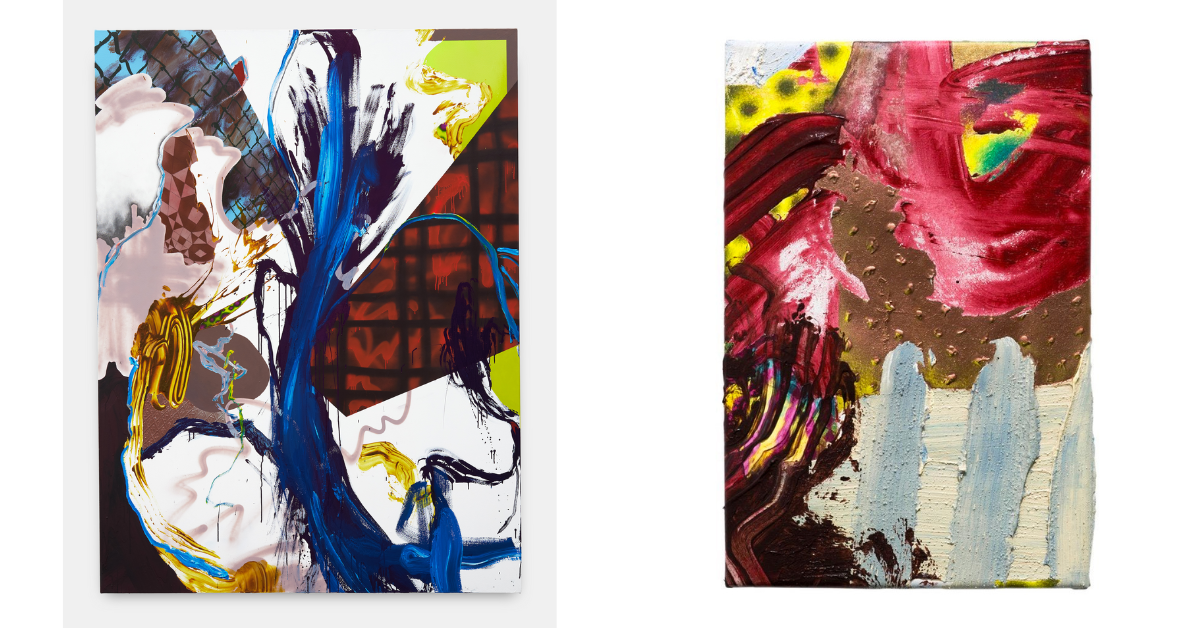
‘I pull at the plug and say thank ye for yankin me’ (left) and ‘am I glamour pussing it’ (right), Kate Dunn
Day Three: Scale
In the morning, we will meet at Tate Modern to visit their free collection In the Studio. Here, we will be focussing on the relationship between the tactile gestures within the artworks and their scale.
You will be encouraged to walk through the collection at a reasonable pace, seeing which works call to you. Once you have been called to a work, you will spend some minutes with it without reading the description. Without prompts we give ourselves the opportunity to observe a wider range of emotions and references. Without prompts we also give possibility to engage with the artwork at a material and emotional level, before engaging at a contextual or art historical level.
After exploring the collection, we will do a walkthrough where everyone shares one artwork, reflecting on the dynamics of scale and gesture.
In the afternoon we will meet back at the studio for a demo on colour and paint. You will work on one large-scale and one small-scale work on paper.
Day Four: Tools
Working with drawing and painting materials we will introduce traditional and non-traditional tools. Employing ideas such as Harold Rosenberg’s action painting, we will view the surface as an arena in which action takes place. Instead of focussing on the work as a product, we will emphasise following the process and being led by the tools.
We will consider how we set up our works to create a stage to act within. For example, when working at the wall, on the floor, or at a desk; how do our bodies feel inclined to behave.
Examples of the tools to be introduced are sandpaper, feathers, buckets, twigs, rags, brooms, sponges and mops.
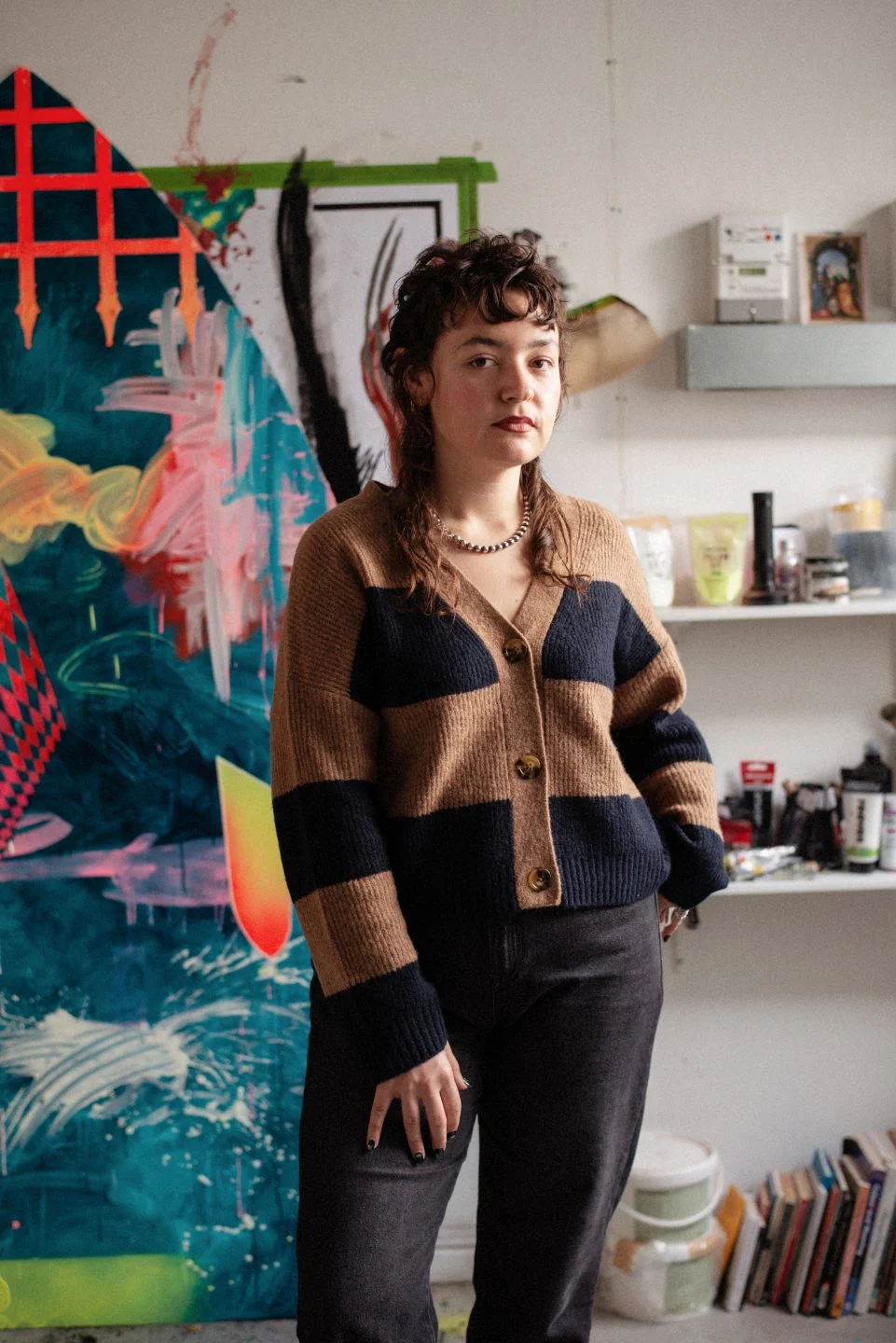 Kate Dunn, Image Credit: Kasia Bobula, Whistles
Kate Dunn, Image Credit: Kasia Bobula, Whistles
Day Five: Self-Directed
Our final day will be spent engaging in a self-directed work. This will be your opportunity to reflect on the experiences of the previous four days, creating a work that expands upon or goes beyond what we have explored.
The day will end with a crit of each person’s work. The crit will be framed around the concept of critical generosity, meaning our comments will not be concerned with complements, nor will they be concerned with insults. Rather, our intent will be to share observations we believe to be generative to the individual’s development. Explaining how the work makes us feel, why it does so, and whether we have any cravings for the future of the work.
What’s included: all teaching, and most materials including art materials.
Please bring:
Clothes that can get dirty – we will be using our bodies so getting marks on clothes may be unavoidable
A notebook
Pencils – HB, or a range of Bs and Hs if available to you
Rags – old t-shirts, sheets, or fabric of any kind
Jars – glass is ideal but plastic also work well, please bring the lids too
Brushes – a range of brushes, with at least one wide brush
10% discount available for City & Guilds of London Art School undergraduate, postgraduate and foundation students and alumni, and staff. Contact summerschool@cityandguildsartschool.ac.uk to receive the discount code.
Please note: in accordance with Eventbrite’s Terms of Service, Eventbrite’s fees are non-refundable. Any refunds made for Summer School bookings will have Eventbrite’s fees deducted, unless we cancel the course. For more information, please see our terms and conditions.
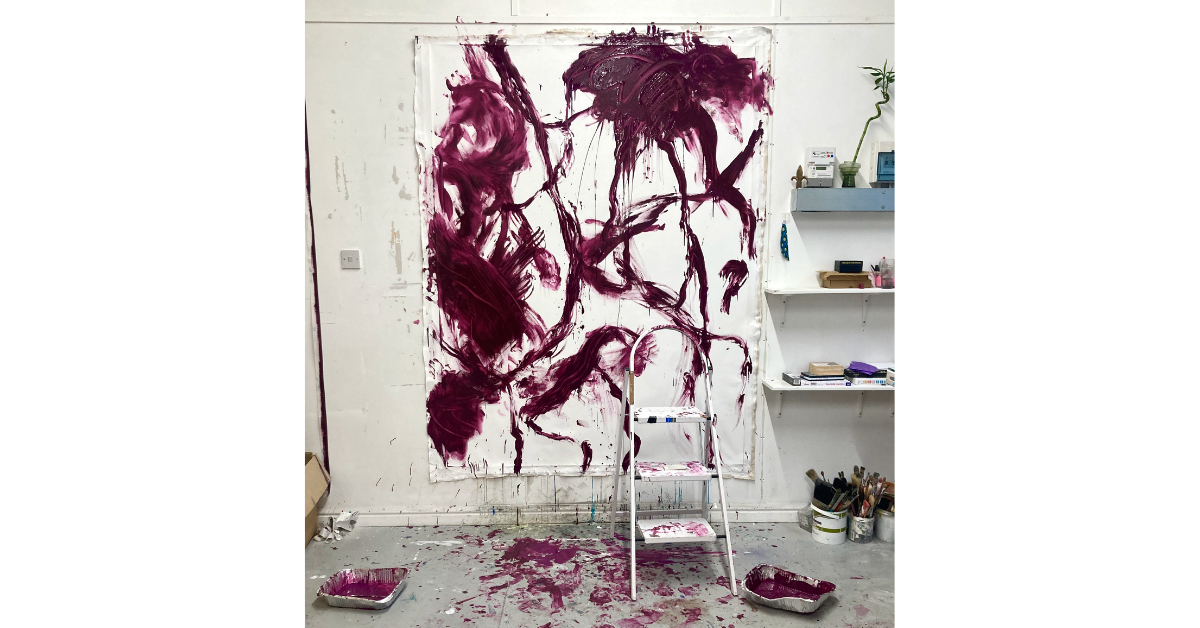 Process shot, Kate’s studio, 2023
Process shot, Kate’s studio, 2023


